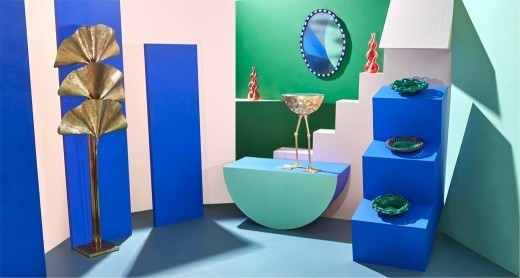Natural Art, Biophilia in Architecture Advice, Tips, Guide
Natural Art: Biophilia in Architecture
9 Sep 2020
Despite humankind’s seemingly relentless pursuit of technology, we have retained a strong affinity for the natural world. Termed biophilia, this phenomenon manifests in almost every aspect of our lives. Architecture is no exception.
The word was coined by American psychoanalyst Erich Fromm in his 1973 book The Anatomy of Human Destructiveness. In it, Fromm described biophilia as “the passionate love of life and of all that is alive”.
Biophilic design has found its way into architecture at both the macro and micro scales; city planners, building architects and interior designers regularly incorporate its elements in their creations.
From an architectural perspective, biophilic design is not simply about bringing nature to the individual. Its emphasis is rather on freeing the individual from the clutches of a non-natural environment. Wide open spaces, minimalist designs and an aversion to opaque building materials all form an integral part of this approach.
Natural Art: Inside and Out
With biophilic design, creative abandon can transcend large structures and enter the realm of decor. That is one of the driving philosophies of Kairos Collective. Their curated range of furniture, lighting and accessories invite the vitality of nature into your home or office.
This return-to-basics is ideal for anyone who yearns for the freedom of the world outside, inside. It can take one of two aspects: direct or indirect experience.
A direct experience regales one or more of the five senses with actual natural contact. This can be through the use of:
- Air – Most commonly in the form of natural ventilation as an alternative (or auxiliary) to climate-controlled systems
- Light – Windows, skylights, atria and reflective elements put the individual back in touch with the natural light-and-dark rhythm of the world
- Water – We have an overt natural affinity for the sight, sound and feel of water, especially when it is in motion
- Fire – While it is the most difficult to implement, the simple sight of flames can induce feelings of warmth
- Life – Plant and animal life transport the color and movement of the earth into the orbit of our daily existence
Indirect biophilic experiences are usually much more feasible in a built environment and can offer just as much comfort as do direct ones. They can be in the form of:
- Images – Photos, paintings, videos and sculptures that embody the visual stimulation of the natural world
- Materials – The tangible sense of touch is arguably the most powerful of the senses, and it can be stimulated by both authentic and faux materials
- Shapes and colors – Even the simulation of natural elements can be beneficial, which makes walls, floors and ceilings ideal canvases while fittings and furnishings fill in the details
The Logical Choice
However innately satisfying the benefits of biophilic design aesthetics may be, they go beyond simply imbuing a feeling of inner peace. Planned and executed correctly, such architecture is an investment that pays perpetual returns.
Among the key advantages – and motivations – is financial. By incorporating natural light and ventilation into the very structure of a building, architects reduce the amount of energy required to power such requirements artificially.
Equally important and significant are the physiological effects that trickle down to those who live and work in these buildings. Studies have shown that the constant brightness of artificial illumination affects the circadian rhythms that regulate our sleep. Poorly designed spaces contribute to lower morale and have even been linked to increased absenteeism.
Given that experiential knowledge can be an effective channel of motivation, another strong argument in favor of biophilic architecture is environmental awareness. Both direct and indirect biophilic experiences can help bridge the gap between thoughts of conservation and real action.
An Innate Balance
In our transition to a world where organic elements become essential features in our homes, workplaces and recreational spaces, the key is ‘balance’. This is particularly important in terms of structural integrity, with artificial materials being decidedly stronger, more resilient and longer-lasting than their natural counterparts.
Around the world, researchers, architects and designers are working to make this harmonious union between organic and artificial a reality. Their efforts straddle the realm of aesthetics as well as necessity.
Rooftop gardens and farms are reshaping the way people become self-sufficient in congested urban cities. New building materials have been discovered or engineered that are recyclable without compromising strength. There may come a time when we can ‘grow’ entire buildings that will be recycled seamlessly back into nature at the end of their functional lives.
It is a scenario with an uncanny resemblance to humankind’s first shelters. With biophilia in architecture, life indeed has come full circle.
Comments on this Natural Art: Biophilia in Architecture advice article are welcome.
Art
Art and Design Posts
Splash of Arts for a Successful Interior Decoration
Importance Of Watercolors In Architectural Visualization
Benefits of employing a Professional for Fine Art Shipping
Buildings
Building Articles
Comments / photos for the Natural Art: Biophilia in Architecture page welcome





